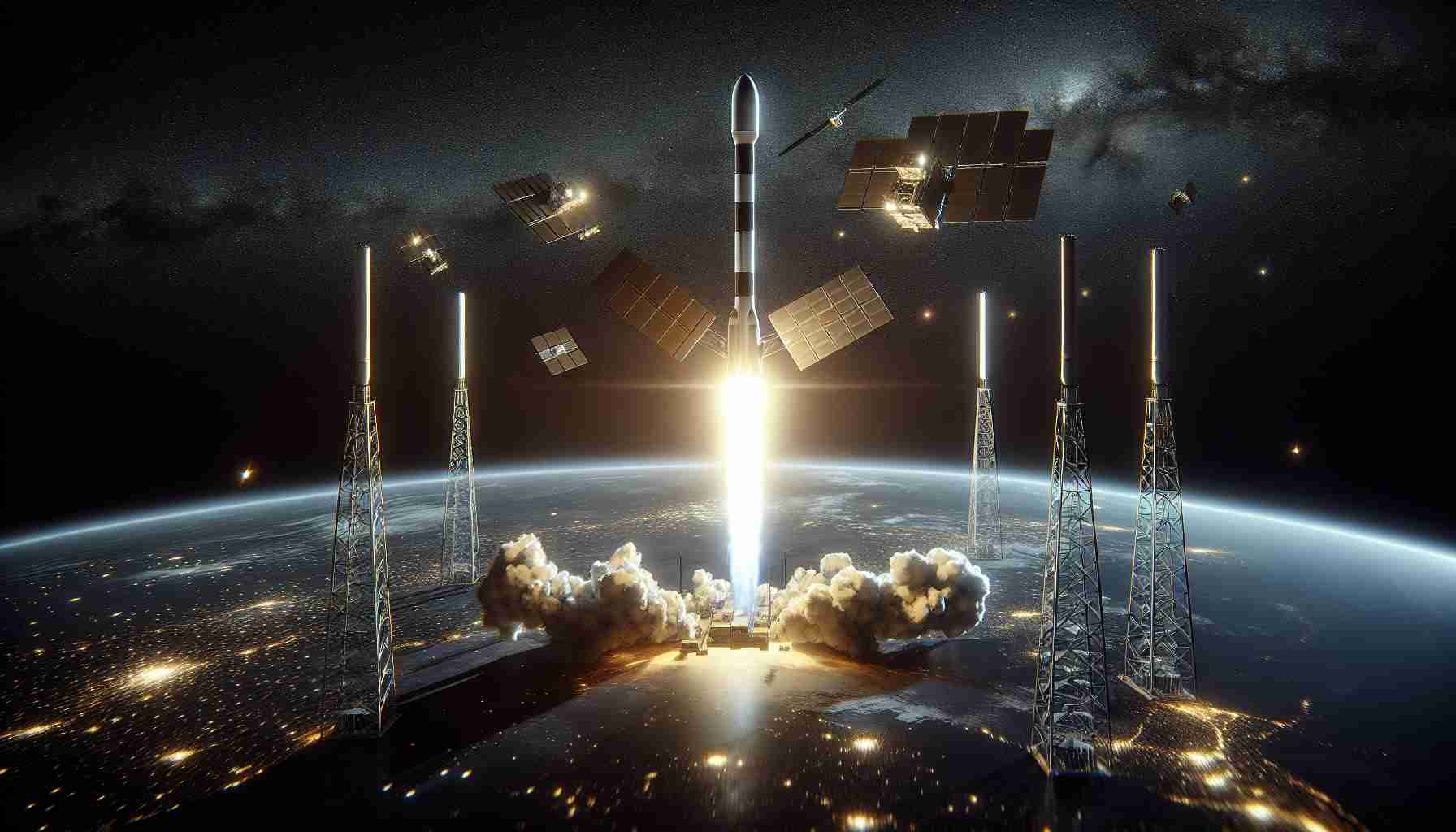
SpaceX has once again showcased its capabilities with the recent launch of the Falcon 9 rocket, delivering a batch of 20 Starlink satellites from Cape Canaveral, Florida. Among these satellites are 13 equipped with technology that enables direct communication with mobile devices.
After approximately 8.5 minutes, the rocket’s first stage successfully returned, landing on the autonomous drone ship stationed in the Atlantic Ocean. This mission marks the 17th successful flight for this booster, emphasizing SpaceX’s commitment to reusability and efficiency in space travel.
The upper stage of the Falcon 9 continued its journey into low Earth orbit, where it plans to deploy the satellites about 64 minutes post-launch. This launch significantly contributes to the expansion of the Starlink satellite constellation, which currently comprises over 6,400 satellites in operation. Astrophysicist Jonathan McDowell noted that of these, roughly 230 are designed for direct mobile service.
This launch is part of SpaceX’s ambitious agenda for 2024, which has already seen 96 Falcon 9 launches, predominantly focused on boosting the Starlink network. Additionally, the company has also conducted two Falcon Heavy missions and carried out three test flights of its Starship vehicle this year, further advancing its goals in space exploration and satellite technology.
SpaceX’s Successful Launch: Falcon 9 and Starlink Expansion
SpaceX recently celebrated the successful launch of its Falcon 9 rocket, delivering 20 new Starlink satellites into orbit from Cape Canaveral, Florida. This event continues to underscore SpaceX’s pivotal role in enhancing global internet connectivity through its ever-expanding constellation of satellites.
What’s New in This Launch?
This mission stands out not only for the number of satellites deployed but also for the innovation incorporated into the satellites themselves. Notably, in addition to the 13 satellites designed for direct mobile communication, the new batch includes enhanced networking capabilities, aimed at improving the overall bandwidth and coverage of the Starlink system. This ensures that users experience higher speeds and reduced latency, essential factors for streaming, gaming, and telecommuting, especially in underserved areas.
Key Questions and Answers:
1. What are the applications of the new Starlink satellites?
The new satellites aim to provide broadband internet access to remote and rural areas, bolster connectivity for mobile devices, and enhance data transfer speeds, particularly useful for businesses and users in geographically challenged regions.
2. How does the reusability of the Falcon 9 affect launch costs?
The reusability of the Falcon 9 rocket significantly reduces launch costs. Each booster can be flown multiple times, with estimates suggesting that this could lower costs to as little as $2,500 per satellite launch, thus making space more accessible for various commercial and governmental applications.
Challenges and Controversies:
Despite the successes, there are challenges and controversies surrounding the increased deployment of satellites. One significant concern is space debris; the rapid rise in the number of operational satellites increases the risk of collisions in space. Experts project that, without regulatory measures, the Starlink project could contribute to a growing field of debris that poses risks to current spacecraft and future missions.
Additionally, some astronomical organizations have raised alarms regarding the impact of satellite constellations on astronomical observations. The bright satellites can interfere with ground-based telescopes, hindering scientific research.
Advantages and Disadvantages of Starlink Expansion:
Advantages:
– Enhanced Connectivity: Enables internet access in remote areas where traditional infrastructure is lacking.
– High-Speed Internet: Provides low-latency and high bandwidth internet, beneficial for modern applications like online gaming and video conferencing.
– Economic Opportunities: Can create new economic avenues in underserved regions by supporting small businesses and local enterprises.
Disadvantages:
– Risk of Space Debris: Increased satellite prevalence may lead to more debris, raising collision risks.
– Astronomical Interference: Observations of celestial bodies become more challenging, impacting astronomical research.
– Regulatory and Environmental Concerns: The rapid expansion may outpace the creation of necessary regulatory frameworks to manage satellite emissions and their impact on ecosystems.
Overall, SpaceX’s expansion of the Starlink network through Falcon 9 launches represents a significant technological achievement with the potential to transform internet access worldwide. However, the accompanying challenges must be navigated thoughtfully to ensure sustainable space practices and protect astronomical interests.
For more information on SpaceX and their missions, visit SpaceX.



